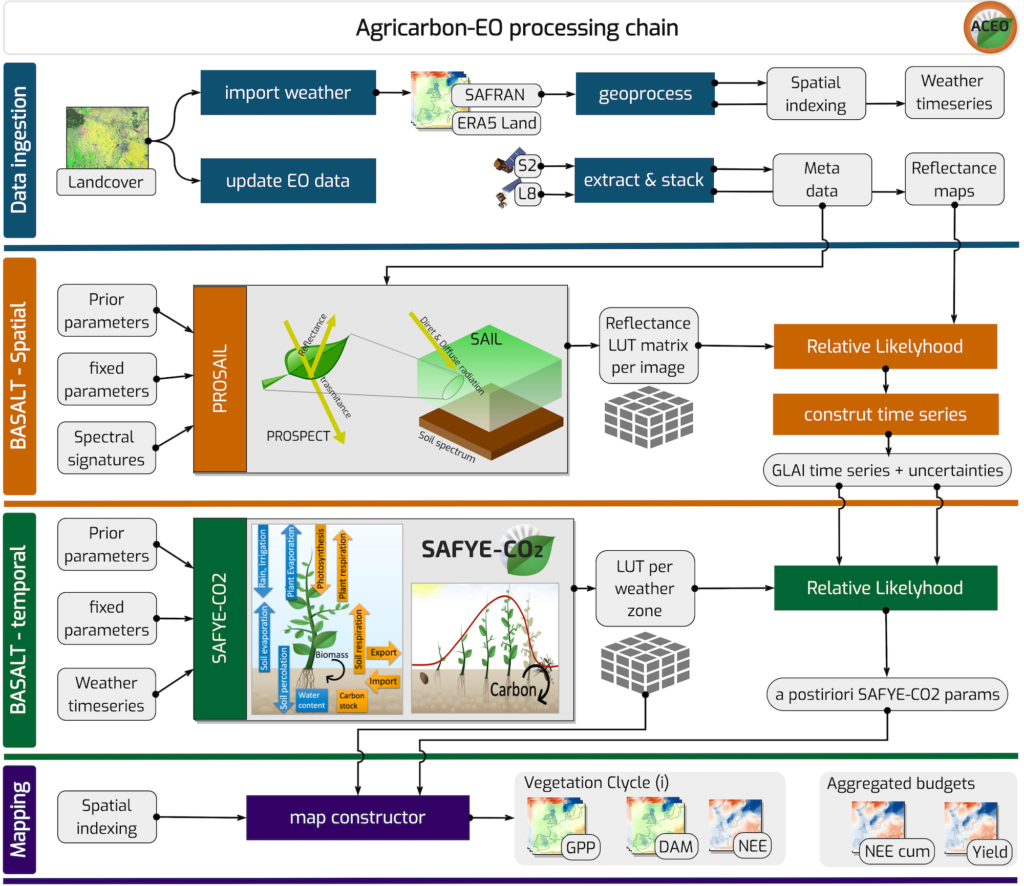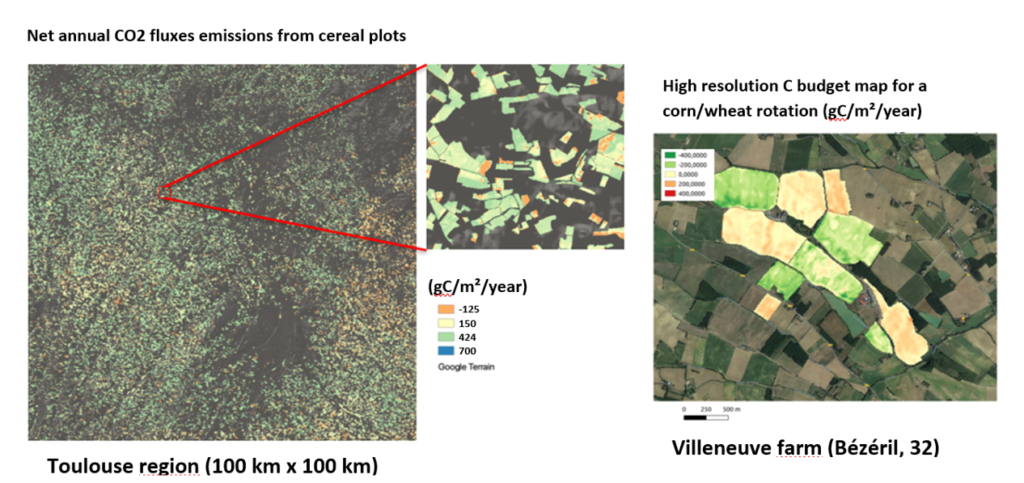The chain has been coded in such a way that the calculations can be parallelized on supercomputers
(e.g. CALMIP of the University, HAL of CNES).

- First, the LAI time series (and their uncertainties) are produced from the downloaded satellite data (e.g. Sentinel-2) and the PROSAIL radiative transfer model (Jacquemoud et al. 2009) by a spatially applied Bayesian inversion approach.
- Subsequently, they are assimilated into SAFY-CO2 with a temporal Bayesian approach. This innovative approach allows :
- very significant gains in computation time allowing high resolution analyses on areas of several thousands of km2
- to propagate uncertainties throughout the chain to assess the uncertainties on the variables of interest (e.g. biomass, CO2 fluxes) at the scale of one or two cropping years. This new assimilation scheme is based on a Bayesian approach combined with a Look Up Table approach. This was made possible thanks to:
- an optimized equation (the likelihood function is vectorized)
- an optimized software architecture (massive use of indexing and vectorization that allow to reduce the size of memory accesses),
- a parallelized calculation process (e.g. on the CNES and University HPCs).
The AgriCarbon-EO processing chain has benefited from the work on Bayesian methods carried out in the framework of the ANR project Rue des Sols (Ahmad Al Bitar, Taeken Wijmer), and of the TOSCA CNES Venus project. It was then developed within the framework of the projects H2020 NIVA (aiming at producing C indicators for the CAP), Naturellement popcorn (BPI), Soil Carbon Farming (Climate Kic) and Taeken Wijmer’s thesis.
It allows to take into account the effect of intra-plot spatial heterogeneities of vegetation development (which can be very strong for some crops such as rapeseed and cover crops) on the components of the C budget, and to be more consistent with the scale of in-situ soil and biomass samplings that must be carried out to validate the simulated C budgets.

The chain will be connected to the AMG soil model and to farm data management softwares (FMIS) to automatically collect, via APIs, the plot level management data (e.g. export or not of straws, organic amendments) to finalize the C budget calculations. To do so, the SAFY-CO2 biomass simulations will be used as input data for the AMG soil model (Clivot et al. 2019; work in progress). The goal is for SAFY-CO2 to provide more realistic and objective estimates of biomass returned to the soil for the AMG model to simulate more accurate soil organic C budgets. The possibility of accessing soil analyses at the plot level via the French Low Carbon Label has made the SAFY-CO2/AMG coupling relevant. Once these steps are completed, the AgriCarbon-EO processing chain will be the only tool that fully meets the specifications established in the international CIRCASA initiative on agricultural soils (Smith et al., 2019).
